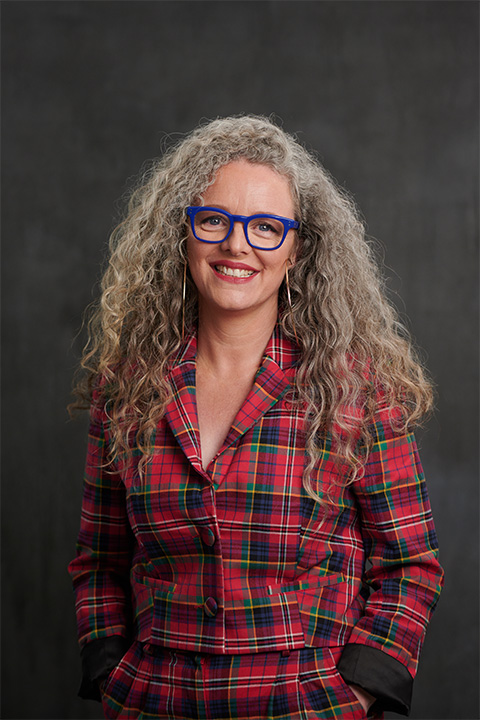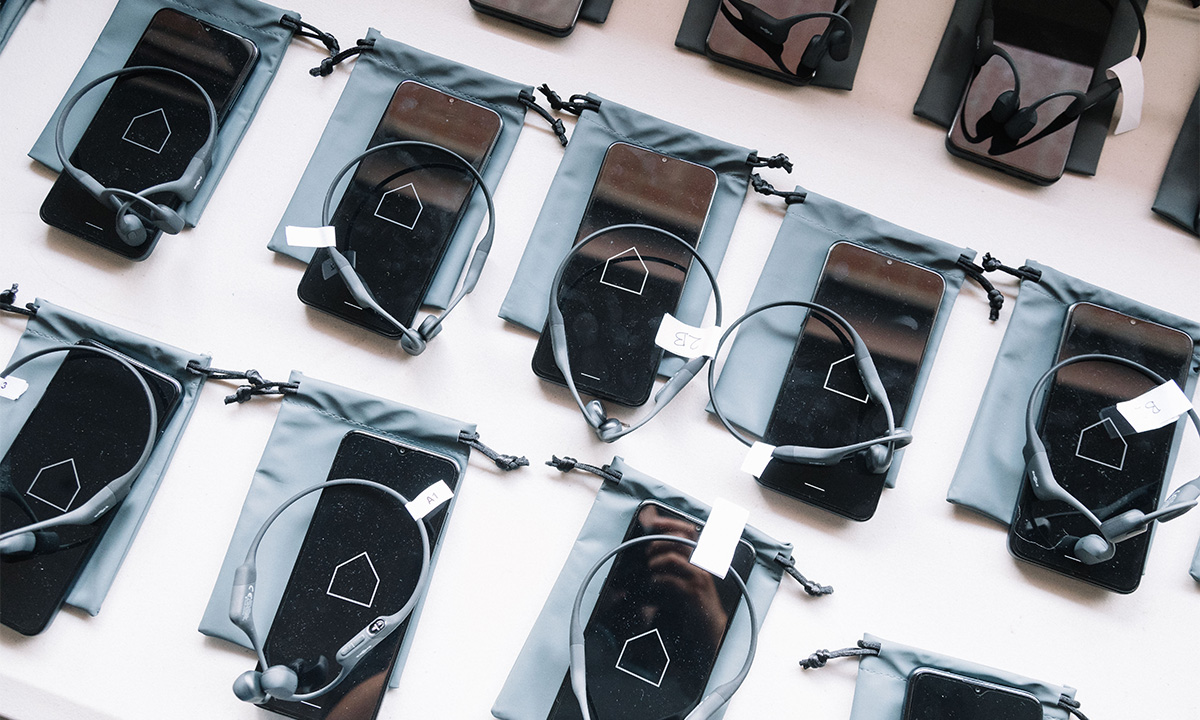In Windmill Theatre Company’s new production, Hans and Gret, audiences will be led astray down a path of fear and false reality for a work that reimagines a classic Grimm Brothers tale.
Windmill’s next production will be a scream
There’s horror in the air the day CityMag arrives at Windmill Theatre Company’s office. The halls pulse with bloody red lights, as a film crew captures footage for an upcoming horror movie.
We’re here to speak with Windmill’s incoming artistic director, Clare Watson, about the company’s Adelaide Festival production, Hans + Gret, which she’s directing. Throughout the interview, screams and echoes of frantic footsteps bounce off the walls around us.
Hans + Gret
3—12 March
Queen’s Theatre
Corner Playhouse Lane & Gilles Arcade, Adelaide 5000
Tickets and more info
Hans + Gret is a Windmill Theatre Company and Sandpit production, presented in association with Adelaide Festival.
This article first appeared in CityMag’s 2023 Festival Edition.
“They’re really going for it out there,” laughs Clare. “That’s so fitting because we’re doing the same thing in the rehearsal room.”
Clare is in Adelaide to direct Hans + Gret, which takes the traditional Hansel and Gretel fairy tale and transforms it into anarchic psychological thriller set to spook teenage audiences when it premieres at the 2023 Adelaide Festival.
“Horror is difficult,” says Clare. “It relies on the audience’s imagination… You’re really asking them to do most of the work, because it’s about accessing their deepest fears.”
Based on an original concept by director Rosemary Myers and co-produced with experience design studio Sandpit, the new work follows two teenagers in a world that has miraculously reversed the ageing process, unpacking the horror at the core of the classic story.

Incoming artistic director Clare Watson. This picture: Richard Jefferson.
“I think the original story is full of terror. The idea of bringing horror to the story is not something we’re placing on it,” says Clare.
“Horror sits deeply and fundamentally underneath this story. Even in advance of the Grimm fairy tale in the 1300s. The idea of famine and the truth of children being ejected from the home and left to die in the woods is scary. It’s all wonderfully terrifying.”
Key to the success of the adaptation has been embracing the originality of award-winning writer Lally Katz, who is returning to the Australian stage with the work.
“Lally’s ability to create a familiar/unfamiliar and give us this sense of the uncanny is remarkable,” Clare says.
“There’s something about her work that, to me, presents a story and the truth of character intention, and it’s often hilarious… but at the same time you can come away from it and have that unsettled feeling.
“It’s like when you’ve had one of those morning nightmares that wakes you up and then the whole day you can’t quite shake it. It’s just below the surface of your reality.
“Lally’s work shows us that the film between what’s really familiar and what’s really scary, or a nightmare, is really thin. It’s so much fun. I feel like that’s how her work functions best.”
The production will literally get under the audience’s skin, with Sam Haren and the team from Sandpit using SHOKZ bone-conduction headphones to deliver personalised missives from the tale’s villain directly into the theatregoers’ skulls.
“Every audience member wears a pair of headphones that don’t cover the ear but sit just in front of it,” says Sam. “They transmit sound by vibrating through the bones in your skull and in the bones in your inner ear.
“We’re using them to deliver this personalised layer of audio on top of what you would normally hear in a theatre show. The audience is directly connected to the witch, who is trying to seduce and control them.”

Prepare to be SHOKZed
Additionally, each audience member will receive a device that will mediate and augment the truth of what is being presented onstage.
“The technology enables us to interrogate one of the cultural rifts that we’re dealing with – that technology can be very effective in creating delineated versions of the world that may in no way be true, but because it’s filtered to us in such a personalised way, we accept it as such,” Sam says.
“Dramatically, we’re finding there’s really exciting things there where the witch can be speaking to everyone at once, but also speaking to individual audience members at different points in the show.”
Through this technology, Hans and Gret positions the audience closer than ever to the horror at the centre of the story.
“The function of the witch in any fairy tale is to put people under a spell. To manipulate,” Clare says.
“We’re thinking about ways we can use this technology to cast a spell and shift the audience experience to the whim of the witch.
“There’s a lot of fun to be had in the realisation that the idea of storytelling itself is really slippery. That a narrator can be unreliable.
“When you come to the theatre and you sit in your seat, you’re getting a very individual experience. Because you’re seeing it on a particular night which is different to another night and you sit in a seat that’s different to another seat.
“What we’re doing with the technology is amplifying that experience. You’re getting that collective communal experience of theatre, and you’ll have the very intimate experience of someone speaking directly in your ear.”
Suddenly, another scream from the shoot echoes down the hall. We both jump, and Clare laughs.
“It’s going to be a real rollercoaster ride,” she says. “We might even get a few screams from the audience.”





